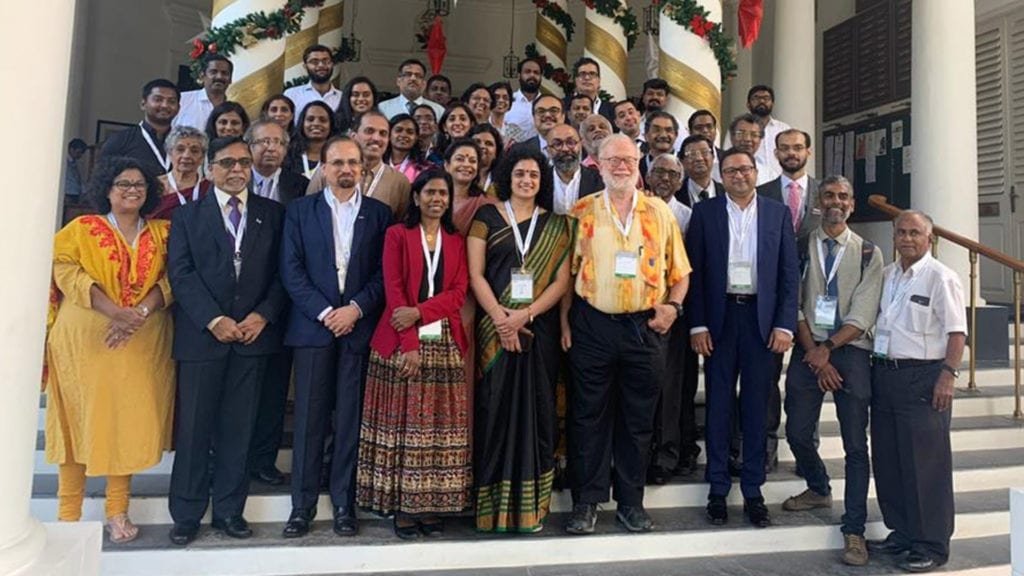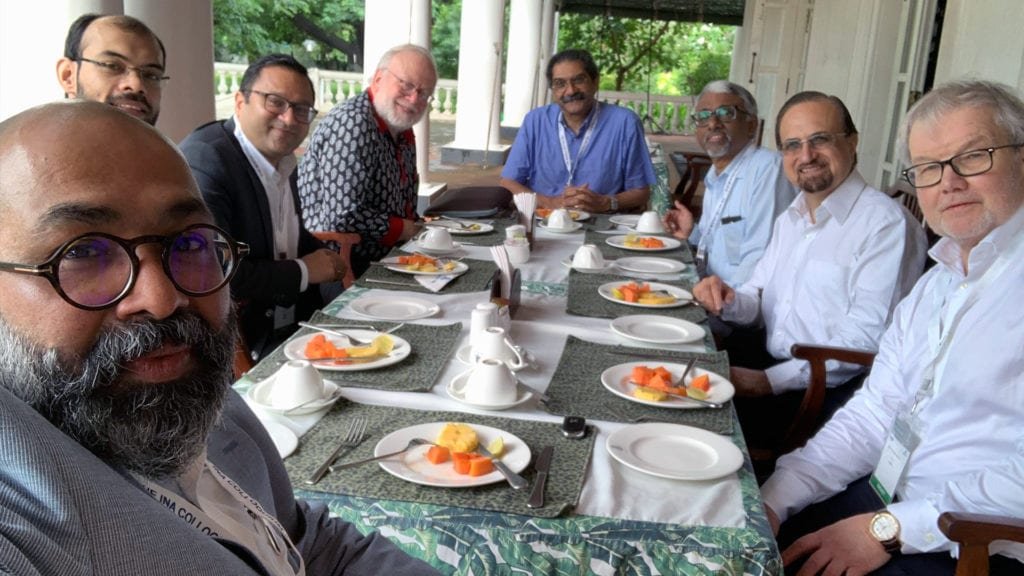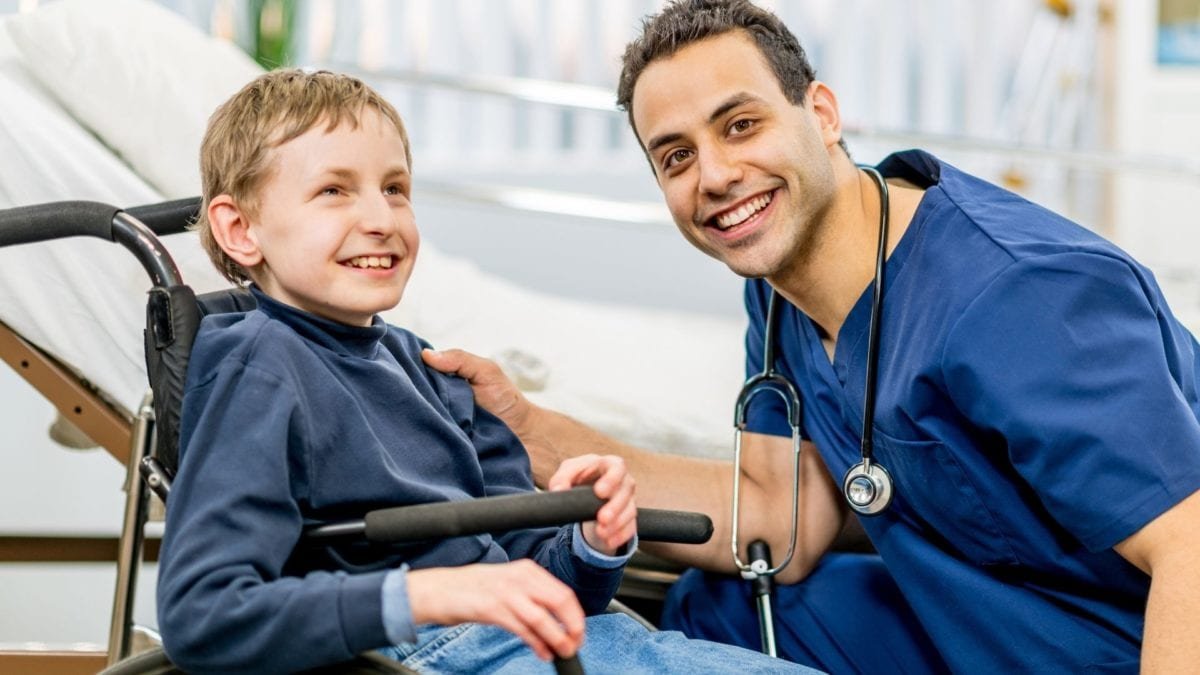– Buddhi Clinic’s Brain and Behaviour Dialogue with the legendary Prof. Michael R Trimble of University College, London, curated and presented by Neurokrish
The Buddhi Clinic virtual programme on 26/12/2020 was a ‘ Brain and Behaviuor Dialogue‘. Prof Ennapadam S Krishnamoorthy, who was Raymond Way Fellow in Behavioural Neurology and Neuropsychiatry, UCL, from 1997, under the mentorship of Prof. Michael R. Trimble, introduced his guru of many years. He gave a brief outline of Trimble’s illustrious career and observed that there could be no better person to elucidate the Brain and Behaviour interface .
As Chair in Behavioural Neurology and Neuropsychiatry of the Raymond Way Research unit, Institute of Neurology, Queen Square, London, and Professor in the same disciplines, Trimble established a unique system of academic mentorship over three decades. This led to neuropsychiatry worldwide remaining associated with the Raymond Way group long after the trainees and fellows left Queen Square. As a sensitive clinician, committed researcher and erudite scholar, Trimble had chosen the less trodden path, to establish neuropsychiatry as a recognised global academic and clinical discipline.
Krishnamoorthy set the ball rolling with “What made you choose Neuropsychiatry?” Trimble observed that the term ‘Neuropsychiatry’ was always a problem, with neurologists in Europe using it vaguely to indicate psychosomatic disorders; Freud unable to give it true meaning in his attempt, through a psychoanalytic viewpoint; the Behaviourists reluctant to give up their simplistic ‘stimulus-response paradigm’!
Trimble observed that it was the dawn of a new era when EEG evidence of the pathophysiology in a neurological disorder, with associated psychological problems, emerged in the late 1950s. Frederic Gibbs’ pioneering EEG studies in Boston, recorded the anatomical localisation of a form of seizure to the temporal lobe, which was replicable over a number of patients. This established the relationship between anterior temporal lobe abnormality and the psychopathology of epilepsy. Modern Neuropsychiatry took a definitive step forward in the 1960s and 1970s, with the discovery of the structure, function and circuitry of the limbic system of the brain. Trimble recalled that as the only Behavioural Neurology consultant in UK for a long spell, he participated in the ‘neuropsychiatric awakening’ of the 1970s, and enjoyed lecturing on limbic neuroanatomy. Neuroimaging resulted in several other revelations in the brain-behavior link. The Raymond Way group, were involved in early PET studies in the 1990s that showed the volume of the hippocampus to be smaller in schizophrenia patient.
Trimble’s dictum is that every neurologist must aim at proficiency in neuroanatomy. This should include brain dissection and not learning through anatomical waxwork models! One wonders if every step in Trimble’s higher education and training trajectory, toward specialisation in Behavioural Neurology, was planned by him well ahead, in order to achieve the thoroughness and authority in his field, which his professional career reflects. Trimble’s first degree was in Neuroanatomy with Sir Solly Zuckerman, followed by MPhil in Psychopharmacology before he trained at Radcliffe Infirmary for MRCP, at National Hospital, Queen Square in Neurology and at Maudsley in Psychiatry. As Johns Hopkins Fellow, he was exposed to American psychiatry for the first time. Though there was demand for his expertise in new drug development, in temporal lobe epilepsy, in particular, he opted for association with the legendary Prof Lennart Heimer, in his research lab. Trimble enjoyed being in his old familiar ground of animal studies, primatology and neuroanatomy, but this time round with years of clinical and scientific expertise behind it. In the four-author publication on ‘Anatomy of Neuropsychiatry’ (dealing with the latest discoveries in limbic system-basal ganglia circuitry, structure, function and pathology), with Heimer as lead author, Trimble, provided the valuable link between basic science sections and clinical neuropsychiatry.
Why did Prof. Trimble go into the field of Neuraesthetics?
As emeritus professor, since 2004, Prof. Trimble had the ‘leisure’ to consolidate his kaleidoscopic professional experiences and find the link to integrate them with his natural inclination towards creativity and the Arts. This resulted in three book publications, which go to form the subject of this online Brain and Behaviour dialogue. The rich fare presented, moved seamlessly from ‘Psychoses of Epilepsy’, championing the right brain along with other neuroscientist thinkers, to the power of the human voice in music at a Wagner opera; why Gana the gorilla at the Muenster zoo, who grieved the loss of her son did not cry ? or why humans, on occasion, find the need to move beyond the mundane, towards ‘a transcendental state of consciousness’?
The Soul in the Brain: The Cerebral Basis of Language, Art, and Belief
Johns Hopkins University Press (2007)
This was the first book discussed. In this provocative study, Prof. Trimble alludes to the interrelationship between brain function, language, art—especially music and poetry—and religion. Inspired by the writings and reflections of his patients, Trimble was drawn into the study of their individual artistic ability, in which he observed a clear pattern. He came to the conclusion that writing effective poetry is probably incompatible with certain disorders-schizophrenia being one, and seems to be highly restricted by epilepsy. Even in the literature, there are very few acknowledged poets with schizophrenia- as the content, metre and prosody cannot be sustained by them. “To be a musician of the canon with schizophrenia seems impossible, as a compositional score, of say Wagner or Brahms, have notes that go on and on and must follow a trend to cohere with the same narrative over a long period”. However, there were patients with manic depressive psychosis (bipolar disorder) who were capable of poetry and music. Another study by the Raymond Way group showed that some patients with temporal lobe epilepsy were ‘hyperreligious’, well above the expected range of involvement in religion. Hypergraphia was another unique temporal lobe phenomenon, but the content of the voluminous pages of writing was poor and lacked cogency.
The ‘Soul in the Brain’ brings together poetry, music (and going back to Greek culture, which offers a third element within Greek theatre) and dancing. This ‘total work of art’, integrating music, poetry and dancing, has ‘movement’. Trimble referred to the German term–‘Gesamkunstwerk’ for this integration of different art forms to create a single cohesive whole. This term finds acceptance in English in the field of aesthetics. “Movement in the arts affects our brain and ourselves in a different way, and that is where neuroaesthetics comes in” Trimble explained. His own keen interest in opera, drew him deeper into the realm of Neuroaesthetics and the role of the brain and mind.
The story of creativity started with language. Broca localized language to a small area in the left anterior frontal region, based on the study of his stroke patients. Hughlings Jackson, a contemporary of Broca, was skeptical about his findings and maintained that a higher order brain function like language could not be confined to a small circumscribed area. Hughlings Jackson, with his visionary understanding of the working of the human brain and mind, well ahead of his times, could be called the founder of modern Neuropsychiatry, Trimble opined.
Scientists were preoccupied with language syntax, and if this was in place and a lesion did not involve the left hemisphere, language was assumed to be normal. It took deeper study of patients with lesion of right anterior frontal region by experts, to spot the subtler missing elements in language, elements which boost its richness, namely, the emotional tone and prosody, (the latter so important to poetry). There was poverty of creative expression, of metaphors and other semantic aspects of language. Language is accompanied by gesticulation. There was slow acceptance, that it required the coordination of both hemispheres to make language.
Going back in time to ancient Greek culture, Trimble traced it to Athens and to the Festival of Dionysus, celebrated to this day, with much music , dance, revelry and abandon, in the spirit of freedom, reminiscent of the romantic era. Of the arts, linking music with religion became prominent during the Renaissance period and resulted even in moving small operas into churches. Opera marked the highpoint of Western musical culture in the 19th and 20th century. Trimble observed that the propensity to art occupies a spectrum, and varies between individuals and also periods in history, e.g., between the Baroque and Romantic periods of Western culture. Ancient Greek cultural music and art forms had a profound impact in shaping European culture through the ages.Interestingly, Iain McGilchrist conceives that it is “the brain that has shaped the world”, in his book, ‘The Master and His Emissary’!McGilchrist, neuropsychiatrist, philosopher and thinker, it was, who put creativity and art forms in the field of neuroaesthetics.
Trimble recalled how another undisputed champion of the right brain, John Cutting and he, had long discussions on this subject, while at the Maudsley as colleagues. Cutting was a neuropsychiatrist, with special interest in schizophrenia. His vehement disagreement with the right brain being assigned ‘minor hemisphere’ status, featured in his profuse writings. Trimble had also associated with Norman Geschwind, who had published his elaborate work on the laterality of brain function.
Why Human Like to Cry :Tragedy, Evolution and the Brain
Oxford University Press (2012)
The second book discussed:
What makes humans *cry?
In 2007, Gana the gorilla in the Muenster zoo, held up her son who died suddenly, and indicated her distress and grief, but did not cry, even as the humans watching her shed tears of compassion. Crying is an attribute exclusive to humans, adding to the other evolutionary attributes of homo sapiens.
Tears can signal pain or distress from one person to the other. When the mother sees the baby’s tears, it signals hunger or perhaps some discomfort. She cuddles and comforts the baby and each time this repeats, the bonding becomes stronger. When one looks at the large human face, and then within a short span of time, tears roll down the cheek of that face, the latter state of intense feeling creates a surge of emotion and compassion in the beholder.
Tears can also emerge as a result of aesthetic experience. Beauty, the art forms, and relating to memories of the past can evoke strong emotions. Proust describes
*Crying’ involves shedding of tears. It may be in the form of sobbing, weeping, etc
the archaeologist who bursts into tears on beholding an ancient Assyrian sculpture. It was a spontaneous mark of reverence for an artifact of the past. Trimble expressed concern that the Western world seems to be moving away from the past – be it from parents and family, a historical monument, or even the four walls of the house where one spent one’s childhood. This is a great pity, as these memories and emotions form the core of aesthetic values and in its absence, one may not be moved by a strain of music or a beautiful face – and probably be the loser!
Crying may follow a deep religious experience or listening to music or while at an opera. “Music appears to be the art form most likely to make us cry”, says Trimble. A study by his team, interviewing participants of the study, revealed that 80% cried to music, and 60% to poetry. Reading a novel, with continuity of the narrative almost equaled music in its impact on the reader. Another study of lottery participants left the team puzzled over why the winner cried. It came about that the ‘tears of joy’ made their appearance when the winner shared the news and bonded with the family and dear ones. Trimble confessed that tears well up in his eyes when he is at a Wagner opera, where the power of the human voice in music can raise the emotional response to its heights. It was acceptable to cry at the opera or in church, especially for men !
Greek tragedy explored many themes around human nature and it heavily influenced the theatre of the Renaissance.In the Renaissance period, in church, every member of the congregation was expected to cry, especially the men. If they failed to concur, they could be severely reprimanded, as crying was considered part of the religious experience, sacred and symbolic of grieving for the loss. He referred to the practice of lamentation,the passionate expression of grief or sorrow, from the Book of Lamentations of the Old Testament. He made a biblical reference to ‘Lacrima Christi’, which literally means ‘Tears of Christ’. William James, the modern psychologist and great thinker elaborated on a variety of religious experiences. He observed that the human mind is in search of a transcendental idea. A deep religious experience can provide this. William James on consciousness : “Consciousness, does not appear to itself chopped up in bits”. There is a continuous flow of thought in our minds, one leading to the other, which he referred to as ‘stream of consciousness’.
Trimble observed that our emotional response to tragedy and crying for emotional reasons have evolved over several millions of years. Then, why are people ashamed of crying ?
One of the more recent major discoveries of highest significance to neuropsychiatry is the mirror neuron. It goes beyond the scope of functional neuroimaging in some areas, as the presence of mirror neurons in the human brain allows identification with the other. This could be through the other person’s facial expression. But tears are an even surer signal from one person to another of emotional feelings; it arouses ‘with’= ‘com’- passion and feeling ‘in’= ‘em’ -pathy. Though the appearance of tears may be physical, put in the metaphysical context, it is a link from one person to the other, by what is termed empathy. ‘Theory of Mind’ is a complex human ability of social cognition, which is required to empathise and must have evolved towards fulfilling emotional reaction; chimpanzees do not have this highly evolved ability of social cognition, though they may imitate an action, like picking up a banana, due to the presence of some mirror neurons, but not beyond this.
Though the human brain circuitry for emotional tears is widespread, it links the cerebral cortex, especially anteriorly, with those areas associated with the representation of emotion-the limbic system and to the autonomic nervous system for the release of emotional tears. This highly evolved circuitry is not present in primates, again pointing to the hand of evolution.
The Intentional Brain: Motion, Emotion and the Development of Modern Neuropsychiatry Johns Hopkins University Press (2016 )
This was the third book discussed:
‘The Intentional brain’ puts together information it has accumulated over several hundred years-over 2000 years. Trimble’s purpose of the book may be conveyed briefly, by quoting from the preface to the book. “The book is not simply about Neuropsychiatry as a medical discipline, but it is in many ways much more a reflection on the way the brain and its functions have been viewed over the centuries, as well as the huge change in orientation, germinating within romanticism, which has given us an understanding of our dynamic, active, creative brain”. This was in stark contrast to the Baroque period, which was restrictive and had some strict formulations for literature, music, and other art forms.
Modern research has focused on the brain as a predictive organ. Trimble’s view of the dynamism of the brain and how we receive the world, borders on the transcendental! “The way we greet the world and the way the world greets us and the world is embodied within us and our need to control it”, he says and goes on to “ We go out in the world expecting something, greet the world with hope of fulfillment, moment by moment. If not fulfilled, there has to be some reconciliation.” If this does not happen, an alternative path is taken, as each situation demands, laying down a novel brain circuitry. The belief that the brain is a passive organ with a stimulus evoking a response, assumes that with repetition of this pattern, neural tracks are laid down, which subsequently guide the automatic response which has been preset.
Trimble spoke about the Baroque period, which was restrictive. The Age of Enlightenment brought further strictures in the belief that science offered the solution to everything. Almost as a reaction to the progressively tightening fetters, both political and social, imposed by earlier periods, there arose an intellectual movement, and with it an explosion of art, music, literature, and the glorification of nature and the past in poetry by the romantics of the 19th century. We enjoy much of this freedom, culture and art forms even today, but some nations show signs of repression, curbing freedom of speech and of the press and increasing inequity which could be possibly labelled the post-post modern age! McGilchrist puts the blame of all the unsavoury components of modernity squarely on people paying less heed to the right brain.
Iain McGilchrist, in his voluminous book, “The Master and His Emissary’, describes the evolution of Western culture, as influenced by specialised hemispheric functioning. He designates the right brain, with its greater contributionto creativity and the arts, (and perhaps to humanity) as the Master, and the left brain as the emissary in the “divided brain”. He is wary of the Western world today becoming increasingly dominated by the left brain which he believes may be to our detriment.
Prof Trimble concluded with “The Intentional Brain is how the brain works and we have got it wrong for 2000 years!” His appeal to appreciate the art forms in order to live life fully continues into his next book, from which he shared a sentence – “ A world without music is not human”.
Dr. Subbulakshmy Natarajan MBBS, DCN (Lond.), PhD, FRCP (Edin.)
Research Consultant, Neuroscience India Group (NSIG)
Adjunct Faculty Public Health Foundation of India
—————————————————————————————————————————–
Prof. Michael Trimble is no stranger to the Chennai audience as he has visited at our invitation on several occasions. He came first at the invitation of Prof. Krishnamoorthy Srinivas as the TS Srinivasan orator for 1998. It is of interest to note that in the topic of his oration ‘Towards a Neuropsychiatric Theory of Literary Creativity’, the central neuroaesthetic theme of the books discussed here was already taking shape, to be consolidated in his retirement days. At several points of the dialogue Prof. Trimble, in a chatty way, would stop to address Prof. Ennapadam S Krishnamoorthy to revive the memories of the significant clinical and research work done together in the Raymond Way unit.
The programme saw good audience participation. During question time there was reference to Indian art forms and some thought-provoking questions, which Prof. Trimble answered at length.
———————————————————————————————————-
















